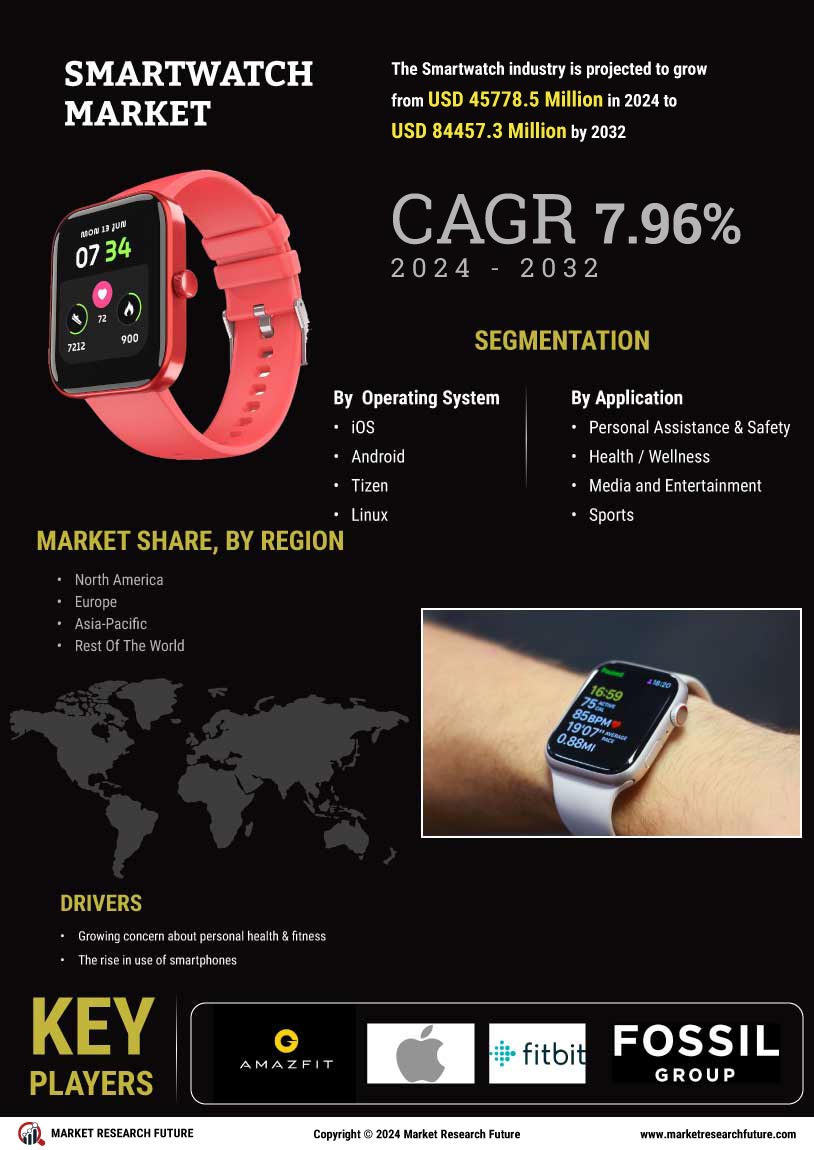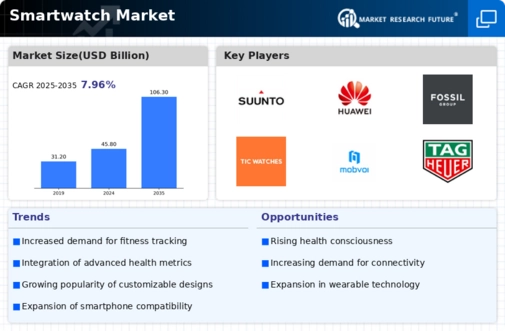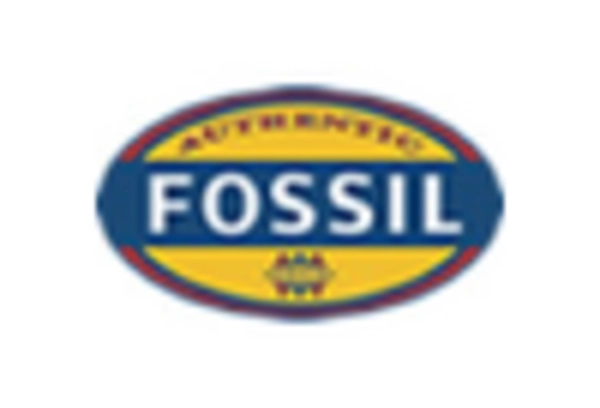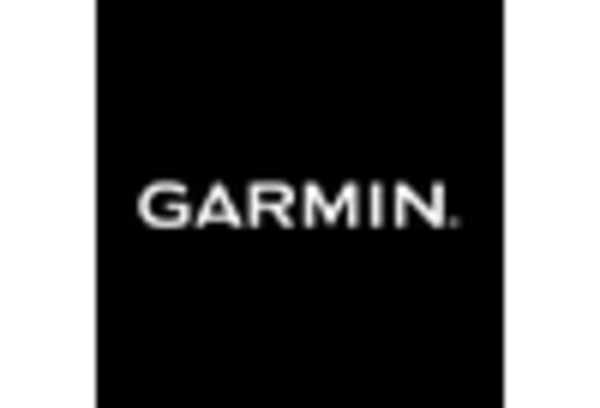Rising Health Awareness
The increasing global focus on health and wellness significantly drives the Global Smartwatch Market Industry. Consumers are becoming more health-conscious, seeking devices that can monitor vital signs, track fitness activities, and provide health-related insights. Smartwatches equipped with features such as heart rate monitoring, sleep tracking, and activity reminders are gaining popularity. For instance, the integration of advanced health metrics in smartwatches appeals to a broad demographic, including fitness enthusiasts and individuals managing chronic conditions. This trend is expected to contribute to the market's growth, with projections indicating a market value of 45.8 USD Billion in 2024.
Market Growth Projections
The Global Smartwatch Market Industry is poised for substantial growth in the coming years. Projections indicate that the market will reach a value of 45.8 USD Billion in 2024, with a remarkable CAGR of 7.96% anticipated from 2025 to 2035. This growth trajectory suggests a robust demand for smartwatches, driven by factors such as technological advancements, health awareness, and consumer spending trends. The market's expansion reflects the increasing integration of smartwatches into daily life, as they evolve from niche products to mainstream consumer electronics.
Technological Advancements
Rapid advancements in technology are propelling the Global Smartwatch Market Industry forward. Innovations in sensors, battery life, and connectivity options enhance the functionality and appeal of smartwatches. For example, the introduction of features like GPS tracking, NFC payments, and voice assistants has transformed smartwatches into multifunctional devices. As technology continues to evolve, manufacturers are likely to incorporate even more sophisticated features, attracting a wider audience. This trend is reflected in the anticipated growth of the market, which is projected to reach 106.3 USD Billion by 2035, indicating a robust demand for technologically advanced smartwatches.
Integration with IoT Devices
The integration of smartwatches with Internet of Things (IoT) devices is a significant driver for the Global Smartwatch Market Industry. As smart homes and connected devices become more prevalent, consumers seek seamless connectivity across their devices. Smartwatches serve as a central hub, allowing users to control various IoT devices, such as smart lights and thermostats, directly from their wrists. This interconnectedness enhances user convenience and drives adoption. The market is expected to grow at a CAGR of 7.96% from 2025 to 2035, reflecting the increasing demand for smartwatches that can integrate with other smart technologies.
Growing Demand for Wearable Technology
The rising demand for wearable technology is a key factor influencing the Global Smartwatch Market Industry. As consumers increasingly adopt wearable devices for convenience and functionality, smartwatches are positioned as essential gadgets. The versatility of smartwatches, which combine fitness tracking, communication, and entertainment features, appeals to a diverse consumer base. This trend is evident in the growing sales figures, with the market projected to reach 45.8 USD Billion in 2024. The continuous innovation in design and functionality further fuels consumer interest, suggesting a sustained upward trajectory for the smartwatch market.
Increased Consumer Spending on Electronics
The upward trend in consumer spending on electronics is a notable driver of the Global Smartwatch Market Industry. As disposable incomes rise globally, consumers are more willing to invest in high-quality electronic devices, including smartwatches. This trend is particularly pronounced in emerging markets, where the adoption of smartwatches is accelerating. Enhanced marketing strategies and the availability of diverse models cater to various price points, making smartwatches accessible to a broader audience. This increased spending is likely to support the market's growth, with projections indicating a market value of 106.3 USD Billion by 2035.
















Leave a Comment